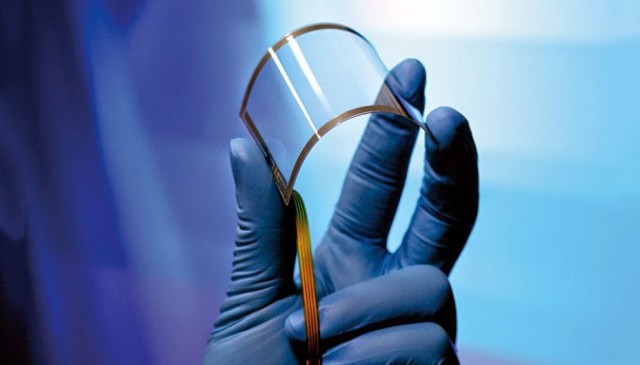With the rapid advancements in technology, there is an improvement in electronics and photonics with the introduction of 2D electronics. 2D electronics are the advanced electronic devices made up by the integration of electronic devices with 2D materials. For example, the combination of 2D nanoparticles with electronic devices results into a more efficient, fast and a small unit. The resulting 2D electronics shows the advantages and benefits of both the electrical device and the 2D material with which the electronic device is combined. 2D electronics has optical, mechanical and electrical properties that enhance the performance of electronic devices. The research on 2D electronics is still under development and henceforth has the attention of many researchers as it promises a range of new technologies. Less energy consumption is also a benefit of 2D electronics over other applications that will create huge market opportunity.
The size of 2D materials is equivalent to the thickness of only a few atoms, making it very small and effective material. The decreased size with a faster and higher functioning efficiency is a driver for the 2D electronics market. Various application offerings by the product, being in the development stage, has caught the attention of various researchers, resulting in an increased adoption of the devices. Graphene, for example, is one of the most active 2D material used for the manufacturing of 2D electronics as it has shown enhancements in electronic and photonic properties.The complexity in the structure of the 2D electronics makes the manufacturing of the products expensive limiting the growth of the 2D electronics Market, making it accessible to only a few.
Global 2D electronics Market can be divided into the following segments – based on Product Type and based on applications. The major segments of 2D electronics market on basis of product type include: Electronic devices: Transistors, chemical sensors, biological sensors, environmental sensors etc. are some of the 2D electronic devices; Optoelectronic devices: Valleytronics, Photodetectors, laser and light emitting diodes etc. are some of the 2D optoelectronic devices 2D Electronics Market Segmentation – Security Display and Imaging, Biomolecular sensing, Energy harvesting, Optical communications, Electromechanical systems, Solar cells, Batteries, and ultracapacitors
The 2D electronics market is sub-segmented into 7 key regions- North America, Latin America, East Europe, West Europe, Asia-Pacific excluding Japan, Japan, and Middle East & Africa. The 2D electronics market is in developing stage across all the regions and it majorly being adopted in North America to develop efficient 2D electronics devices in the market. The APAC region is expected have high potential as there is huge demand for 2D based technology to develop advanced consumer electronics products, MEA will be one of the fastest growing markets in 2D electronics market as increasing demand for 2D based electronics devices
The hybrid technology to combine two or more 2D materials to produce one single material is the new key development in 2D electronics.The 2D electronics resulting from this integration functions on molecular level increasing the applications of the products showing enhanced features when compared with the parent 2D materials.Rice University (U.S.) has taken an initiation to combine a conductor and an insulator to produce 2D electronics device on an atomic level. The resulting product is made by the combination of graphene and hexagonal boron nitride.Some of the major 2D electronics global players are SANKO SEMICONDUCTOR Co., Ltd., Skeleton Technologies, Haydale Limited, Aledia, Graphene Laboratries Inc., 2D semiconductors, CIC nanoGUNE, and 2D Electronic and Automation.









